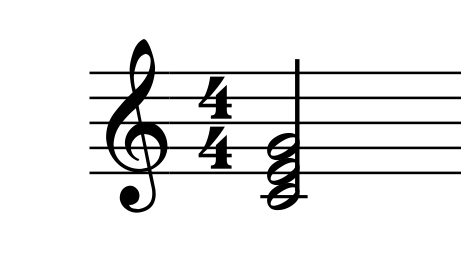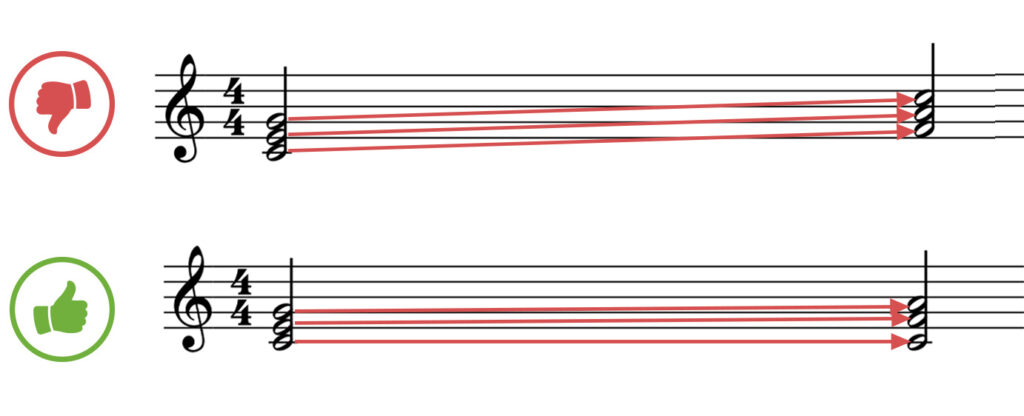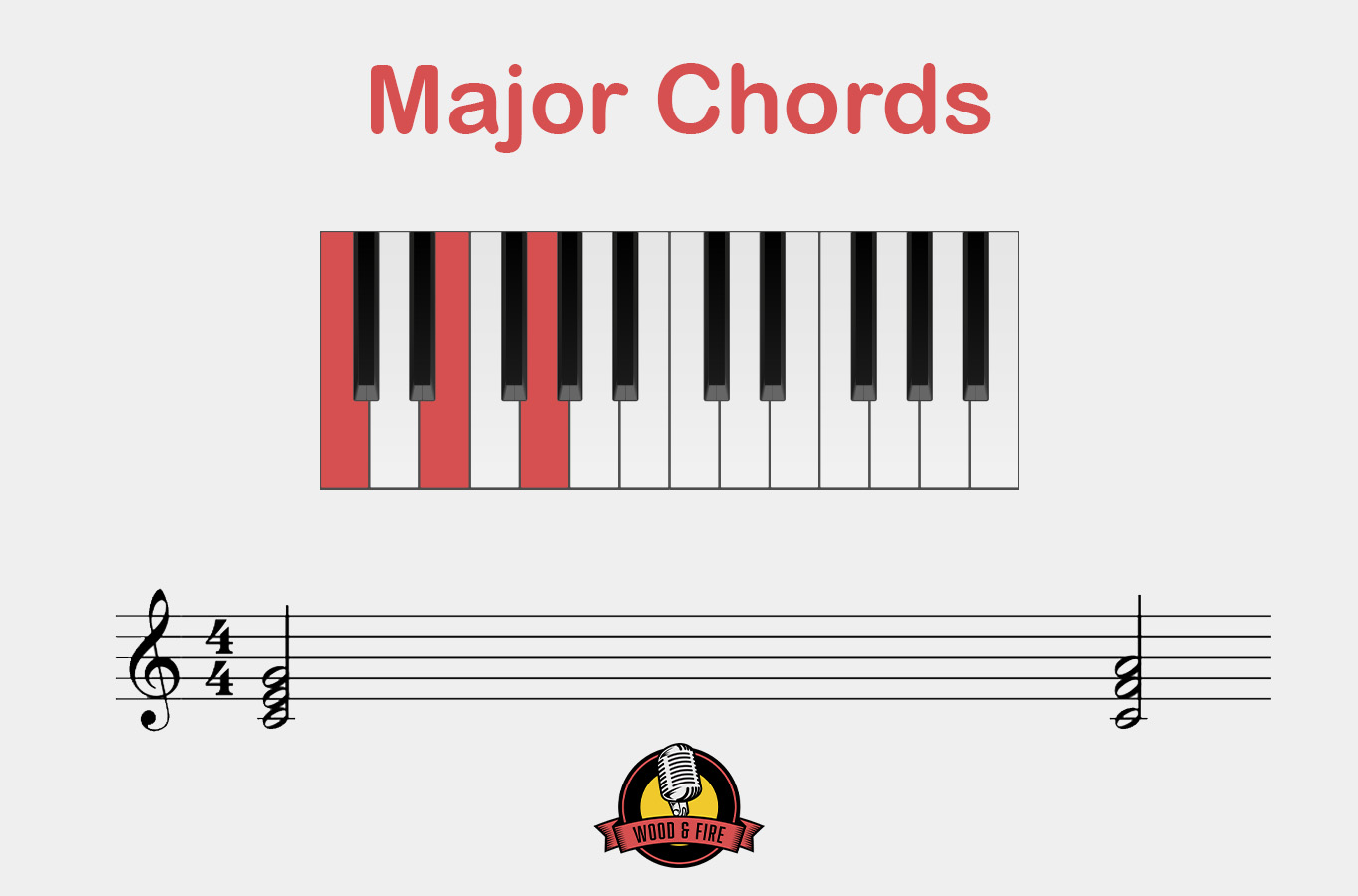What are major chords?
Major chords are one of the two basic types of chords in music, along with minor chords. They consist of three notes and sound happy and bright. They are very easy to learn and play, and are often the first chords taught in music lessons.
How do you form a major chord?
A simple major chord consists of three notes:
- The root: This is the starting point of your chord and gives it its name. For example, the root of a C major chord is C.
- The major third: This is the next note in the chord, four semitones (a major third) above the root. So in a C major chord, this would be an E.
- The fifth: This is the last note in your chord, seven semitones (a perfect fifth) above the root. In a C major chord, this would be a G.
Let's take the C major chord as an example, since it contains no sharps or flats.

More complex major chords
The simple major chord consists of only three notes, but if you add a fourth note, you get more complex and interesting harmonies:
Major seventh chord (maj7): This chord is made up of the root, major third, perfect fifth and major seventh. For example, a Cmaj7 would be the notes C, E, G, and B. This chord has a bright, rich sound and is often used in jazz and pop music.
Dominant seventh chord (7): This chord is made up of the root, major third, fifth and minor seventh. For example, a C7 would be the notes C, E, G, and B♭. This chord is often used as a dominant in major and minor keys and has a tense, dissonant sound.
Major6 (6): This chord is made up of the root, the major third, the major fifth and the major sixth. For example, a C6 would be the notes C, E, G, and A. This chord has a warm, mellow sound and is often used in jazz and pop music.
Duradd9 (add9): This chord is made up of the root, major third, major fifth, and major ninth (the second, one octave higher). For example, a Cadd9 would be the notes C, E, G, and D. This chord has an open, bright sound and is often used in pop music.
Inversions of major chords
Inversions can be used to make the chords within a chord progression more interesting and varied by varying the voicing. This means that not all three voices (tones) go in the same direction and at the same distance from each other.
For example: If I want to go from C major to F major, I can either move all the notes of the first chord up 5 semitones to get F major - but that sounds boring. Or I can write/play F major with an inversion as follows:

Triad chords have 2 possible inversions in addition to the basic position:
- Basic position: Here the root is the lowest note, followed by the third and finally the fifth.
- First inversion: Here the third is the lowest, then the fundamental and finally the fifth.
- Second inversion: Here the fifth is at the bottom, followed by the fundamental and finally the third.
How do you use major chords in compositions?
Major chords are very common in music and can be used in many contexts. They are often the basis for happy, upbeat, and energetic pieces of music. In major keys these are the tonic (I), dominant (V) and subdominant (IV).
- Tonic: In major keys, the tonic is the I chord and it is a major chord. For example, in the key of C major, the I chord is C major. The tonic serves as the "home base" of the key and gives the feeling of calm and resolution.
- Dominant: The dominant is the V chord in major keys and is also a major chord. In C major, the V chord would be G major. The dominant creates a tension that naturally wants to resolve in the tonic.
- Subdominant: The subdominant is the IV chord, which is also a major chord. In C major, the IV chord would be F major. The subdominant creates a kind of "interstitial tension" that often occurs before the dominant and helps to create movement between the tonic and the dominant. It can also be replaced by the parallel minor chord if you want to convey a more melancholy mood.
These three chords form the basis of countless songs and are a central part of Western music - the three most important chords of all.
Well-known examples of these chord progressions are the songs "Stir it up" by Bob Marley (A, D, E) or "Twist & Shout" by the Beatles (D, G, A). Sometimes the dominant (V) is used as a minor in such a cadence to make the mood a bit more melancholic. A good example is "Louie Louie" by The Kingsmen (A, D, E minor).
Usage in a minor key
Major chords can also be used in minor keys, where they appear as III, VI, and VII. In the key of A minor, these would be C major (III), F major (VI), and G major (VII). If you want to learn more about chords and their functions within a key, I recommend our article on the circle of fifths.
Sometimes in minor keys, the dominant is played in major, which creates a greater need for resolution and thus increases the resolution effect in the transition to the tonic. For example, in A minor one would play E major instead of E minor.
Keep reading: Using diminished chords to bring more tension into your compositions
















